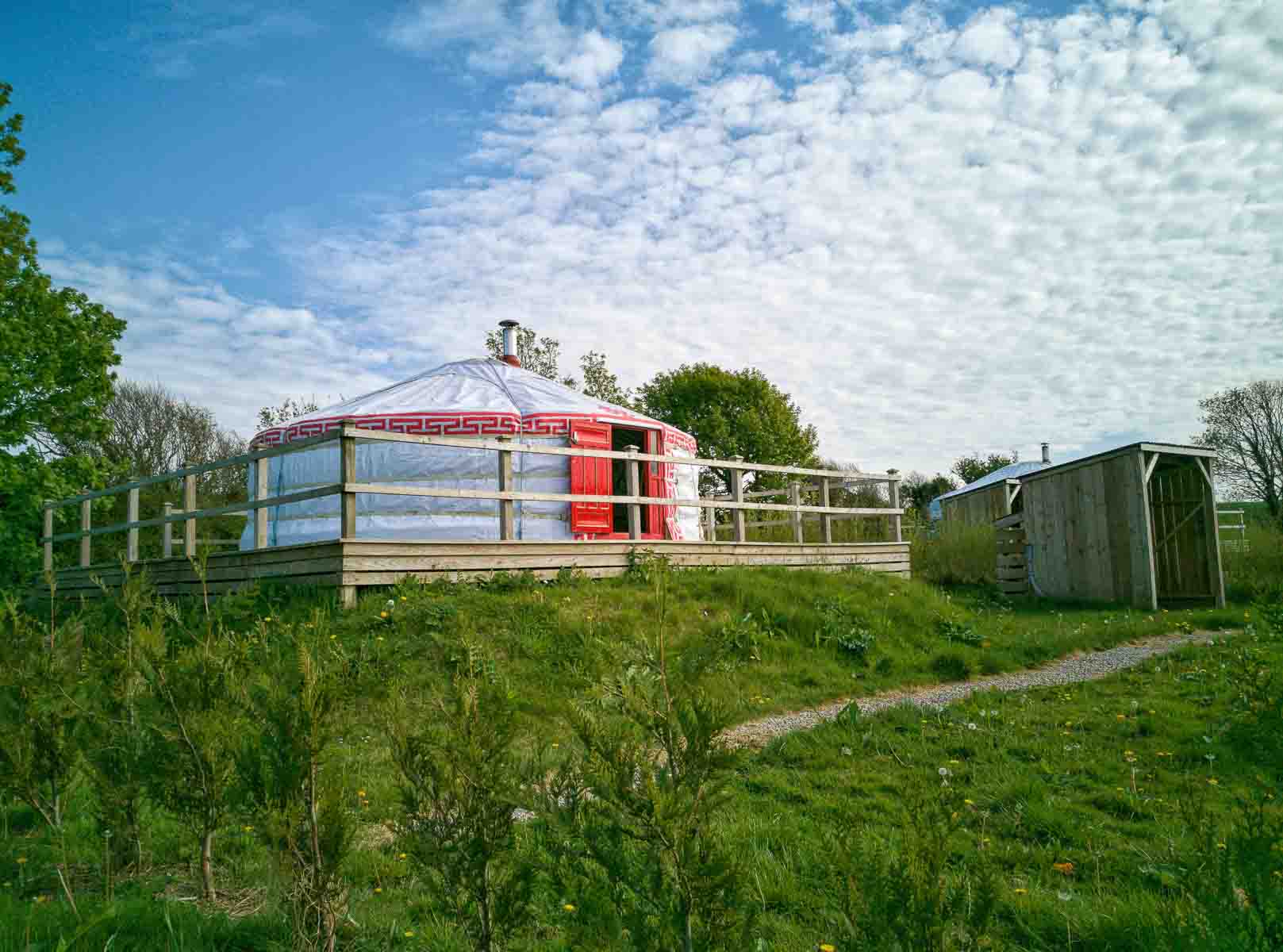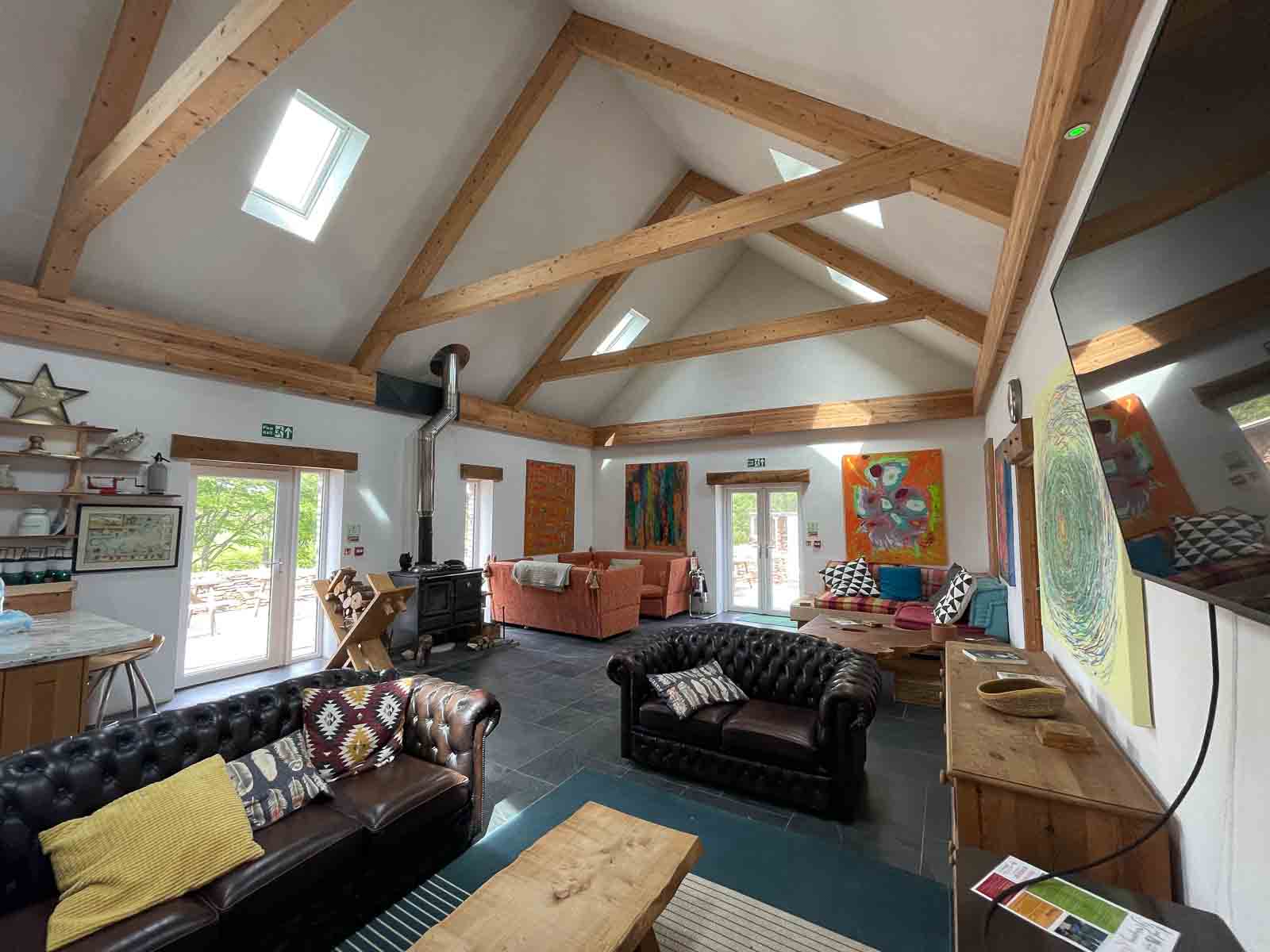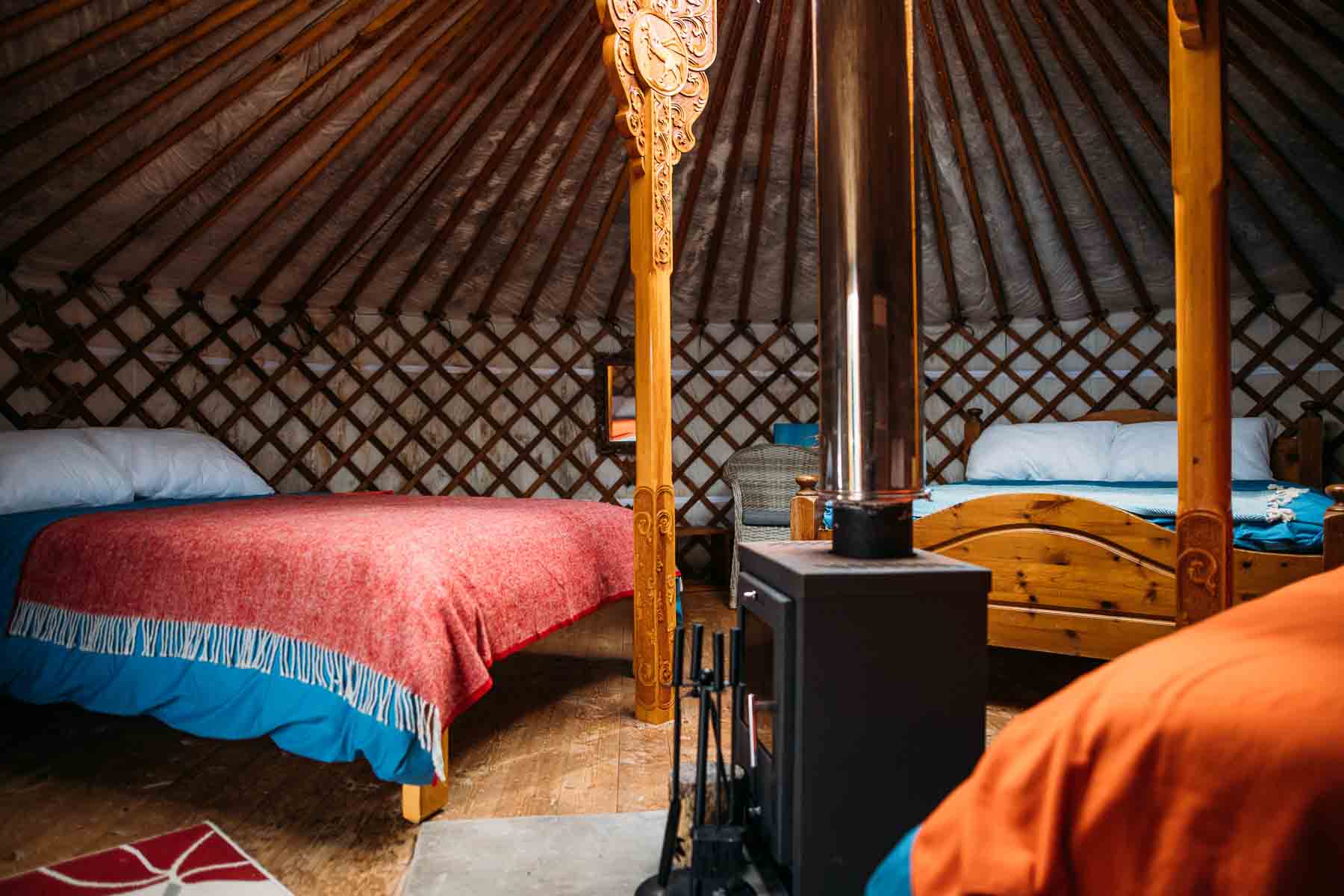Firefly Estate: An interview with Charlie

We recently had the pleasure of adding a truly unique new venue to our collection, Firefly Estate. This enticing new venue is a 100% Carbon Neutral glamping destination, accommodating as many as 63 guests. Located a short drive from the famous Newquay Beach, surrounded by nature, and overlooking the Porth Resivour, Fir Hill is a truly magnificent venue for hosting large events. Here’s what Charlie, founder of the estate, had to say about his experience of setting up a 100% Carbon Neutral glamping designation:
1. Firefly Estate has a very unique setup. Can you tell us a little bit about how the space operates?
The Estate is centered around two buildings: the Cowshed and Barn. The Cowshed houses eight toilets/wetrooms in one half, and an amenity area in the other half where guests can charge their phones, catch up with emails, and generally hang out. There is also a small kitchen in the Cowshed for guests who wish to cook something that they can’t do on the kitchenette by their yurt. In general, large groups occupy the space around the Cowshed and utilise an outdoor kitchen with the adjacent large terrace with its outdoor sofas and picnic tables.

2. You offer accommodation in the form of yurts. What prompted the decision to build yurts as opposed to buildings, bell tents, or geodomes, for example?
10 years ago, the glamping accommodation options were very limited (it has developed enormously in the last few years). I wanted the accommodation to blend naturally with the Estate, so I was only interested in yurts and tipis… Initially, I bought a tipi, which looked great from the outside, but had little space inside. I could not imagine a family staying in them for a week.
I then bought a yurt to accommodate myself when the construction of my first 2 buildings commenced. I fell in love with them and decided to use yurts for all our accommodation. We now have 13 yurts, having started with 9.

3. What sort of events have you hosted? Have there been any particular occasions that have stood out above the rest?
We started our events business in a small way after 2 years of family glamping. The first gathering we hosted was a stag weekend, where we were very pleasantly surprised at the behavior of the group. We also hosted a number of smaller gatherings (birthday parties etc.), which we very much enjoyed hosting.
Our most memorable event was a 21st birthday party for 65 guests (all staying in our yurts). The group were all delightful and great fun, and they employed a steel band from Plymouth which was the perfect music for the venue. No amplification was required, no electricity was expended, and the band was excellent! They were surprised when the youngsters danced energetically to all their songs… they commented that usually most parties who employed them simply sat around and treated their music as background.
We have also had a small wedfest (wedding festival) with 2 bands playing which was good fun. In a month’s time, we are holding another wedfest which is on an ambitious scale…fortunatel, the couple have joined in the preparations already, which helps!
4. What are some of the greatest challenges that you have faced in getting set up?
Our biggest challenge so far has been maintaining so many yurts in the winter. They are too big and too many to take down each winter and Cornwall has strong winds. However, we have met this challenge so far!
5. How challenging was it to achieve Carbon Neutral status, and how long have you had this status?
The main challenge was the cost!
Many years ago I studied for a degree in Environmental Chemistry, but my career ended up taking a totally different direction. When my health dictated that I shouldn’t continue my career in that direction, by chance the Estate was offered to me (I had been trying to buy it for a while), and suddenly I was the owner of a ruined Estate.
One of the issues was that the driveway up to where I wanted to build was 400m long. Given this and the overall isolation of the Firefly, it was not going to be cheap to connect to the national electrical grid. Although the cost of implementing off-grid was greater than connecting to the grid, I felt that it was still a good idea and ultimately it might protect me from high energy prices (which it now finally has!). Most importantly, it was my first career opportunity to personally contribute to the carbon emissions issue and help ‘save the planet’.
All our electricity is self-generated by solar panels (and stored in huge batteries) and all our heating is provided by solar thermal panels. When the sun does not shine, we use a biomass burner utilising logs we have gathered from the 40 acres of woodlands that form part of the Estate.
The Firefly Estate was actually never ‘on grid’ as it was abandoned before it could have been connected. Technically, one could say that the estate has always been ‘Carbon Neutral’!
6. Why did you set up the event and Glamping business at Firefly Estate?
I purchased the Estate 10 years ago, and at that time it was completely ruined. I acquired no functional buildings, just a few stones and bricks in a high state of dilapidation. The Estate was wild and even the ancient driveway (over 350 years old) in certain parts had over a foot of mud which had accumulated over the years. Indeed when we cleared the mud, we found multiple single Wellington boots which had been discarded as visitors had ‘got stuck in the mud’.
The big question for me was ‘What to do with the land and ruins?’
The key quality of the Estate is its natural beauty and views of the valley, so whatever I did with it, I would be trying to enhance its beauty and at the same time develop some buildings from the ruins and incorporate some sort of business. Inevitably, family Glamping was a good option to help fund any restoration but whilst building I ensured that at some stage I would be able to develop other businesses so I created large terraces and spaces for future use. It is these spaces, as well as the Glamping accommodation, that we use for events.
